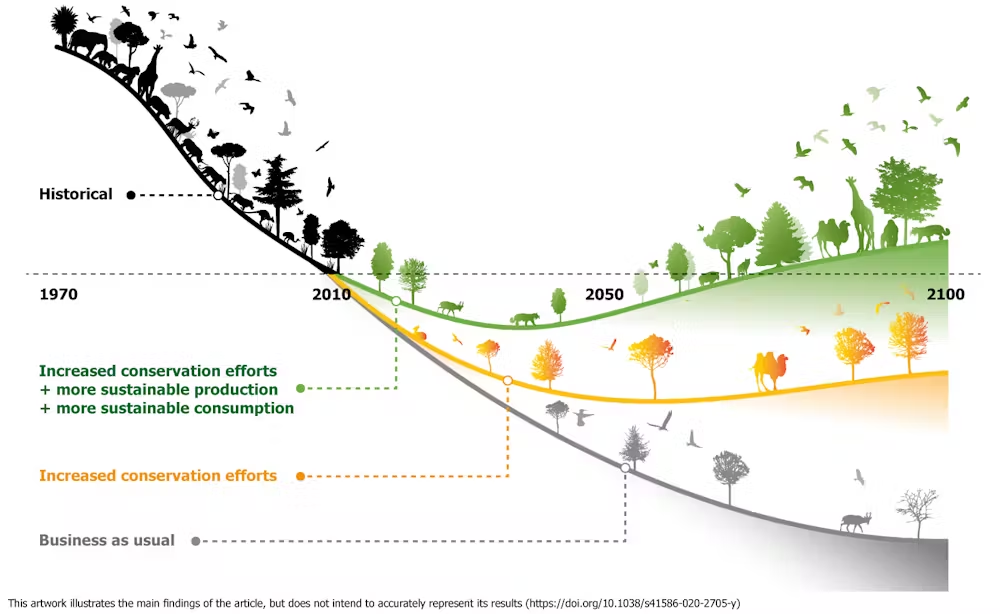A Milestone Agreement to Reverse Wildlife Decline

After years of negotiation setbacks and global disagreement, nations have finally reached a groundbreaking funding agreement to reverse wildlife decline. At recent UN-hosted discussions in Rome, member countries overcame previously unresolved issues that stalled talks at last year’s COP16 summit in Colombia. The newly agreed strategy aims to bridge a significant financial gap and provide critical support for biodiversity protection worldwide.
Biodiversity in Crisis: The Urgency to Reverse Wildlife Decline
Scientists continue to raise alarms over the accelerating rate of species extinction—warning that humanity may be driving the planet toward a sixth mass extinction. Wildlife populations and plant diversity have sharply declined due to habitat destruction, pollution, climate change, and overexploitation. Despite a 2022 landmark pledge to protect 30% of global land and marine environments, funding has remained a major roadblock to implementation.
The $200 Billion Biodiversity Commitment
In 2022, global leaders committed to mobilizing $200 billion annually by 2030 for biodiversity efforts. However, only $15 billion has been raised so far, according to recent OECD figures. The gap threatens to derail key environmental targets. The Rome talks renewed this pledge and emphasized not only funding quantity but also accountability and inclusivity.
Key Outcomes of the Rome Biodiversity Talks:
- National biodiversity financing strategies for all participating countries
- Establishment of a permanent global fund for biodiversity protection
- Allocation of specific funds to support indigenous communities
Inclusion and Global Cooperation as Core Principles
The renewed strategy underscores the importance of inclusive approaches, particularly the active involvement of indigenous groups, whose lands often harbor critical ecosystems. Negotiators praised the agreement as a diplomatic breakthrough, especially at a time of rising global tensions. However, several nations—including the United States—did not attend the talks.
Environmental Groups Urge Immediate Action
While environmental organizations welcomed the agreement, they stressed the urgency of implementation. Jill Hepp of Conservation International emphasized that “celebration must lead to immediate innovation and delivery.” Experts warn that without swift action, even the best strategies may fall short of halting nature loss.
Economic Imperatives for Ecosystem Preservation
Nature is not just about beauty and biodiversity—it’s a pillar of the global economy. Studies estimate that over half of the world’s GDP depends on healthy ecosystems, while nearly 4 billion people directly rely on forests and oceans for survival. From fisheries to pollination, nature’s services are irreplaceable and essential.
National Accountability: Strategies Still Missing
Despite the Rome breakthrough, many countries have yet to submit national biodiversity plans—something they were required to do by last year. The United Kingdom submitted its strategy during the final hours of the Rome talks. The Joint Nature Conservation Committee (JNCC) revealed in 2023 that only 6.5% of UK land is currently protected adequately, well below the 30% target.
Funding Must Translate Into Action
The ultimate success of the agreement depends on its execution. Transparency in financial flows, real commitments from governments, and grassroots implementation will determine whether this plan can truly reverse wildlife decline. Conservationists and economists alike agree: biodiversity isn’t a luxury—it’s a necessity for planetary and human health.
Looking Ahead: Reversing Wildlife Decline by 2030
The world has taken a critical step forward, but the journey has just begun. Nations must now move from policy to practice, from pledges to protection. The next five years will be decisive in determining whether the global community can genuinely reverse wildlife decline and preserve Earth’s rich biological heritage for future generations.




